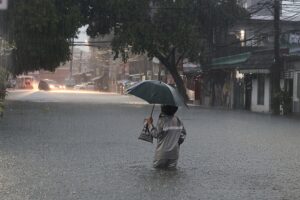A POTENTIAL La Niña could start influencing weather patterns as early as September, mainly in the form of more typhoons, the government weather service, known as PAGASA (Philippine Atmospheric, Geophysical and Astronomical Services Administration), said.
In a statement, PAGASA said the prevailing weather pattern in the tropical Pacific, known as the El Niño Southern Oscillation (ENSO)-neutral, is most likely to persist until October.
However, climate models indicate an increasing probability of a brief La Niña episode emerging between September and December.
La Niña, the cool phase of ENSO, is characterized by unusually cool sea surface temperatures in the central and eastern equatorial Pacific.
PAGASA said a La Niña Watch is issued when conditions are favorable for the development of La Niña within the next six months, and the probability rises to above 55%.
It said La Niña typically result in an above-average number of tropical cyclones towards the end of the year and above-normal rainfall in most of the Philippines, possibly bringing floods and landslides to vulnerable areas, it added.
PAGASA said it will continue to “closely monitor the ongoing El Niño, its effect on the local climate, and the possibility of La Niña.” — Kyle Aristophere T. Atienza

